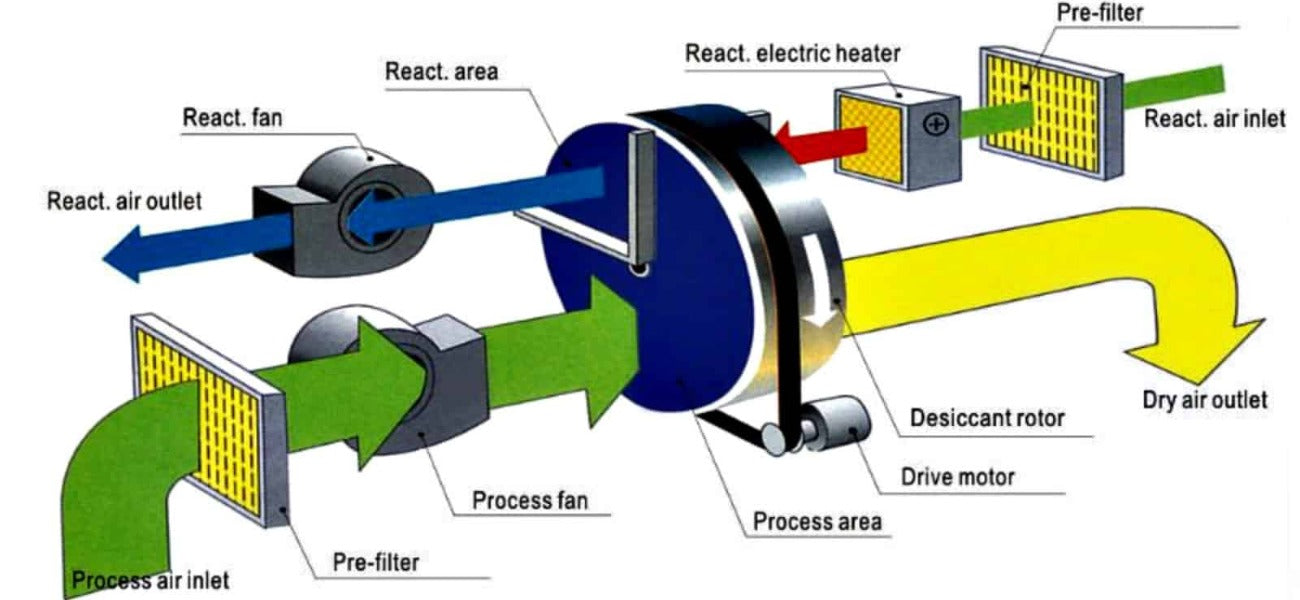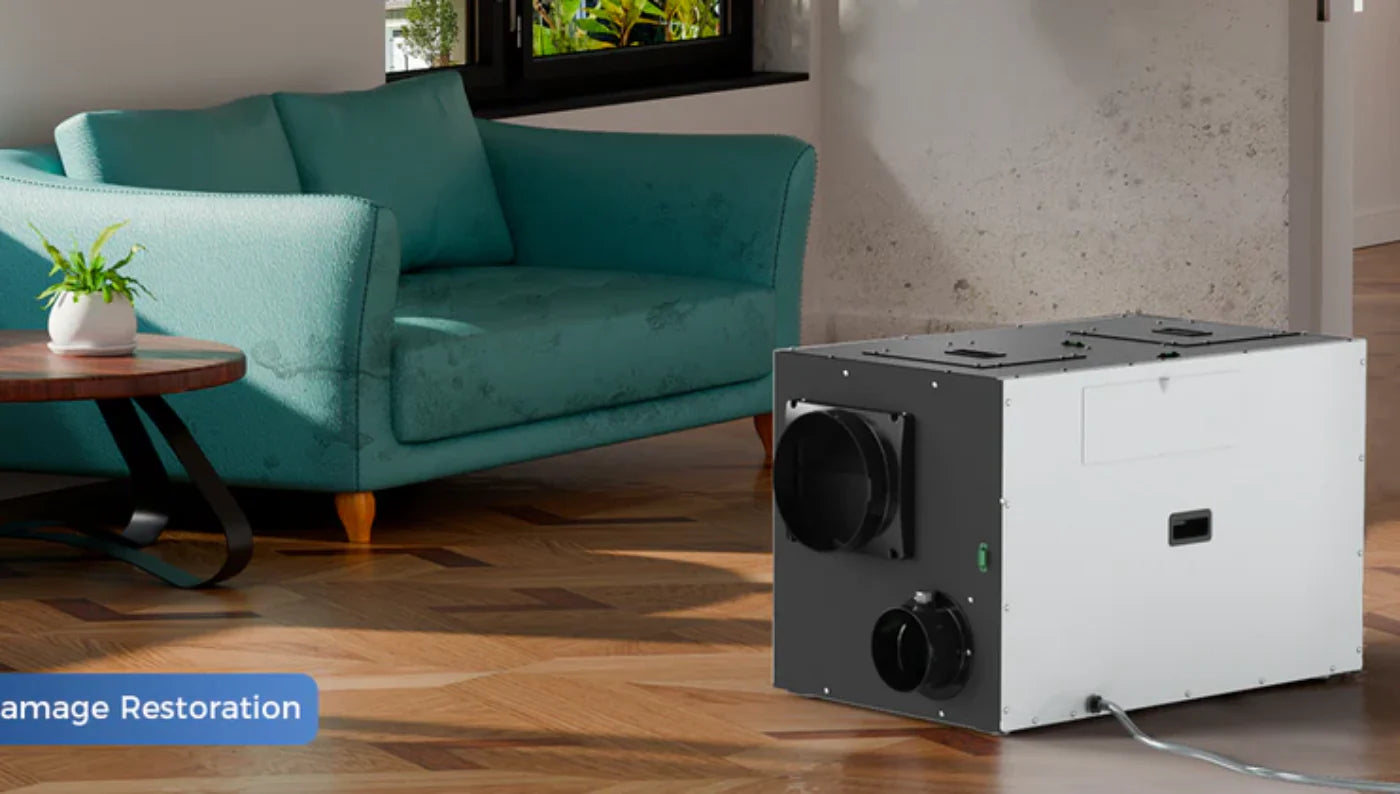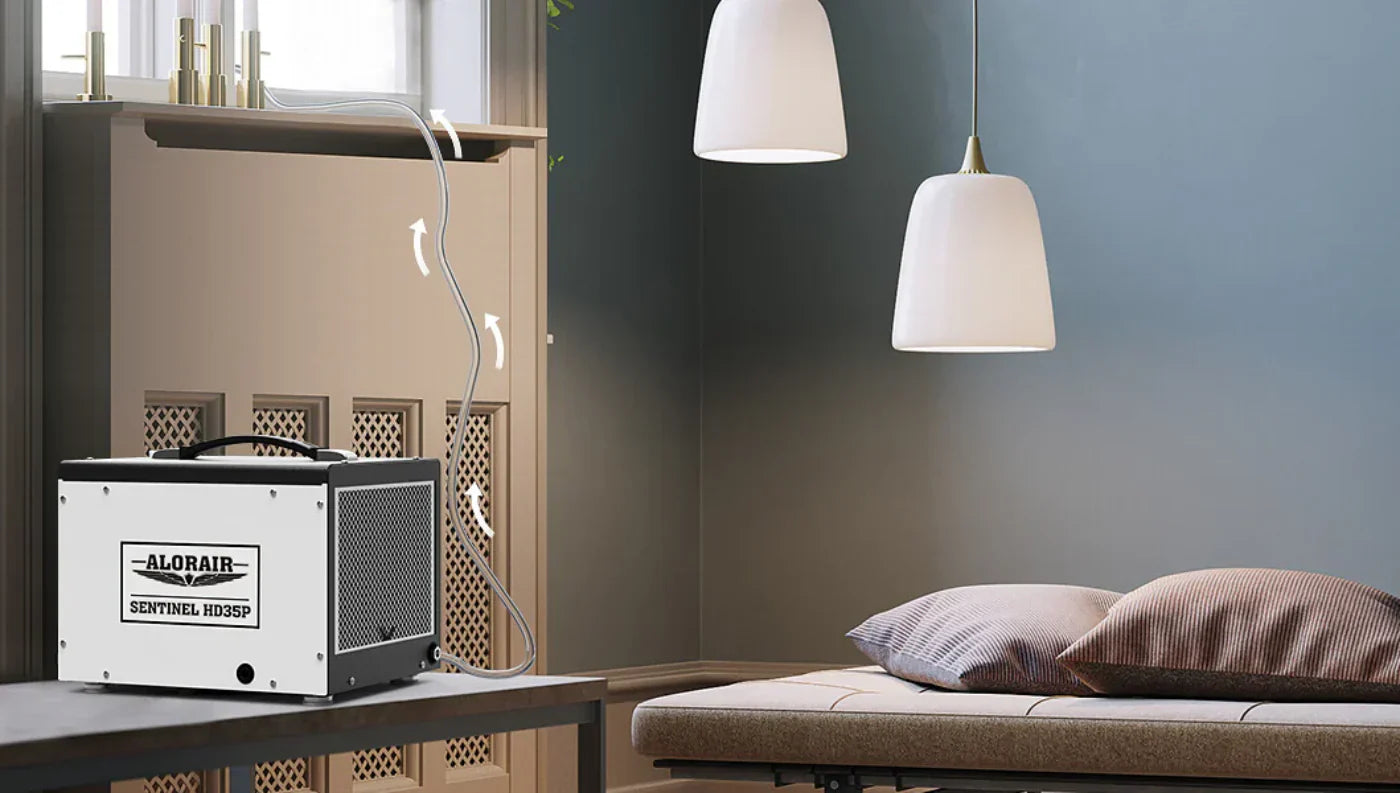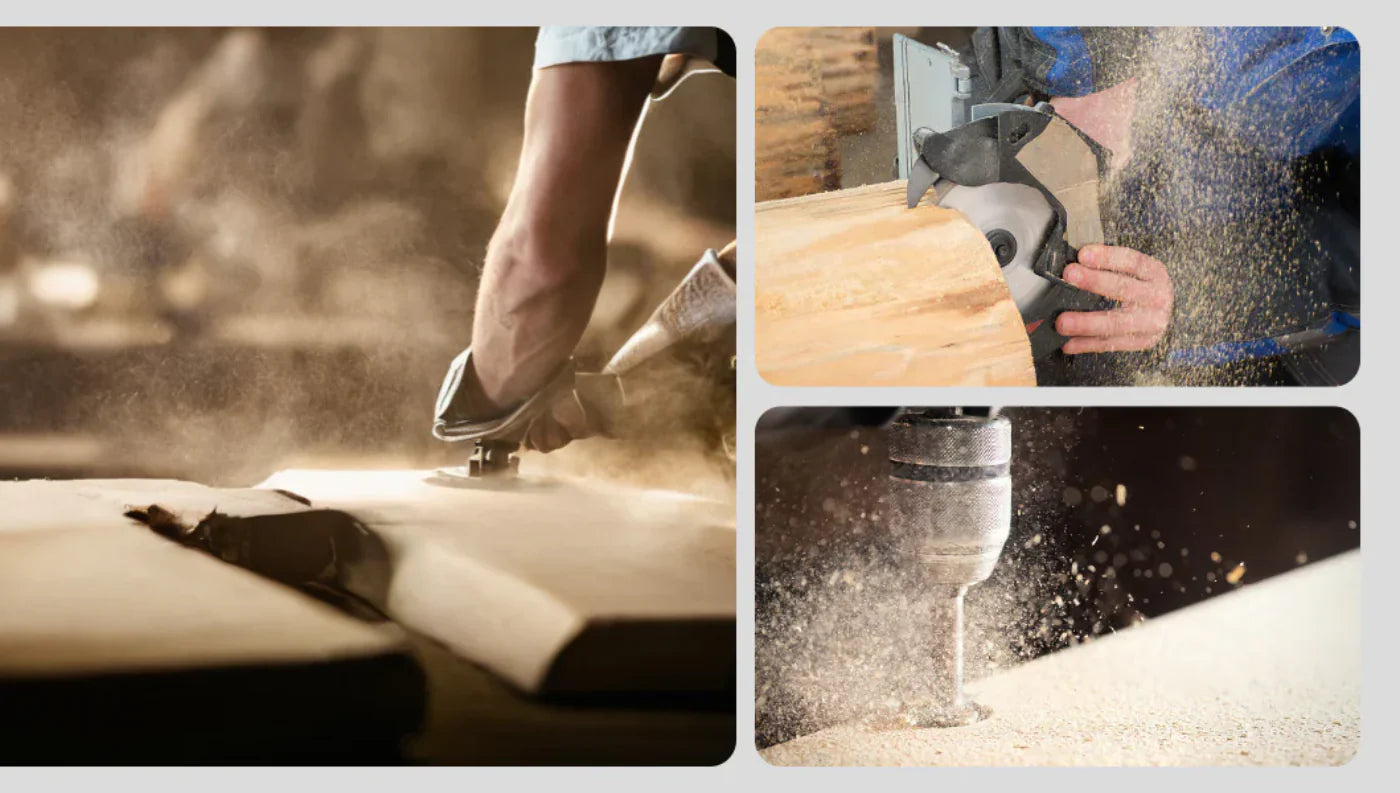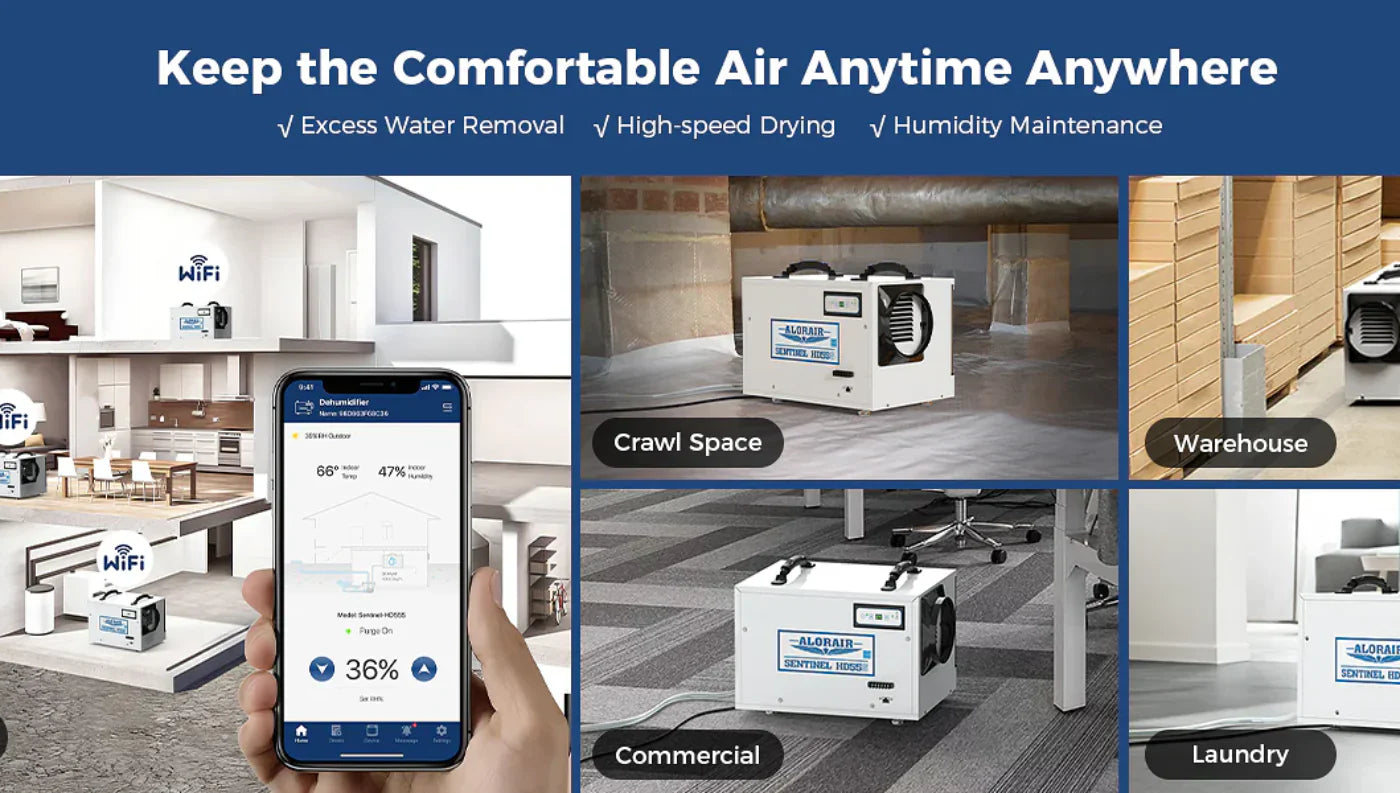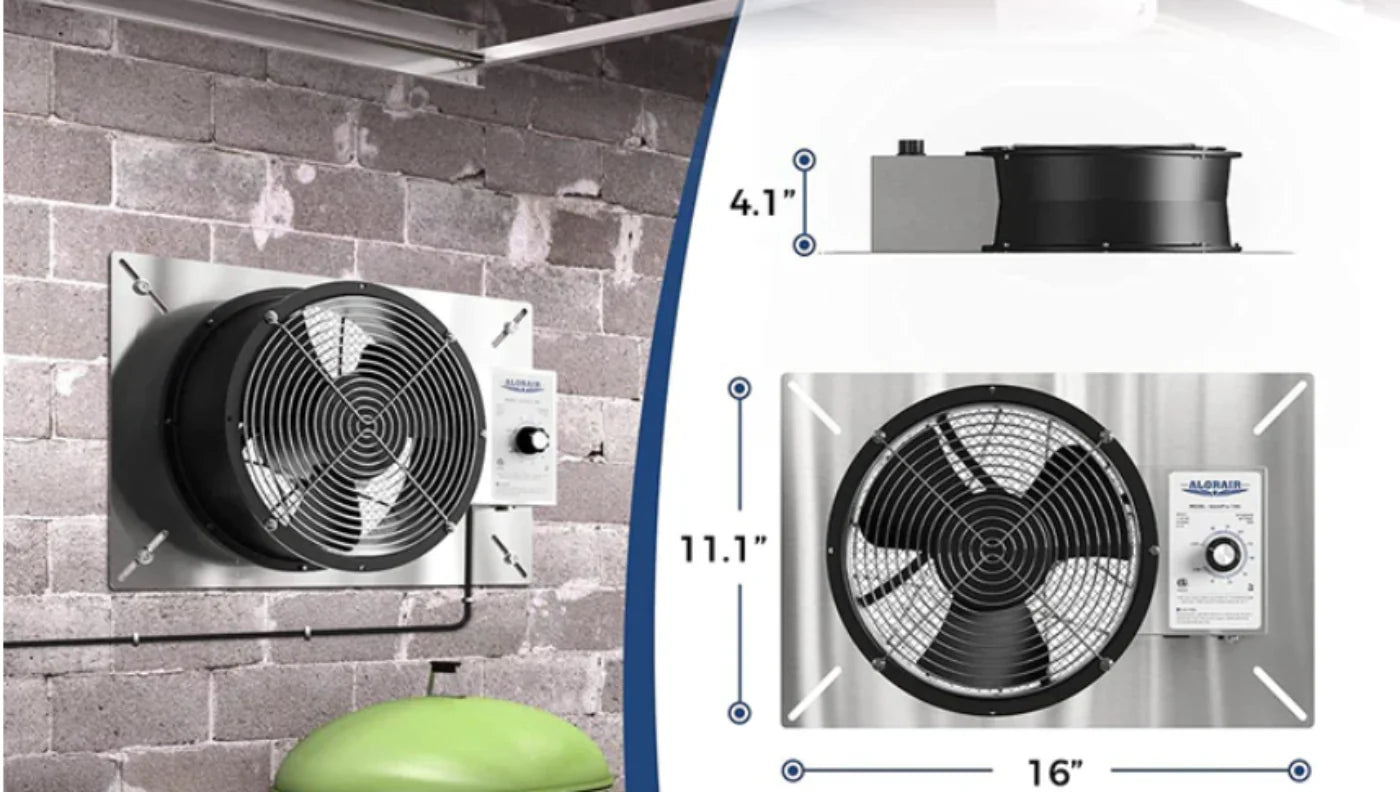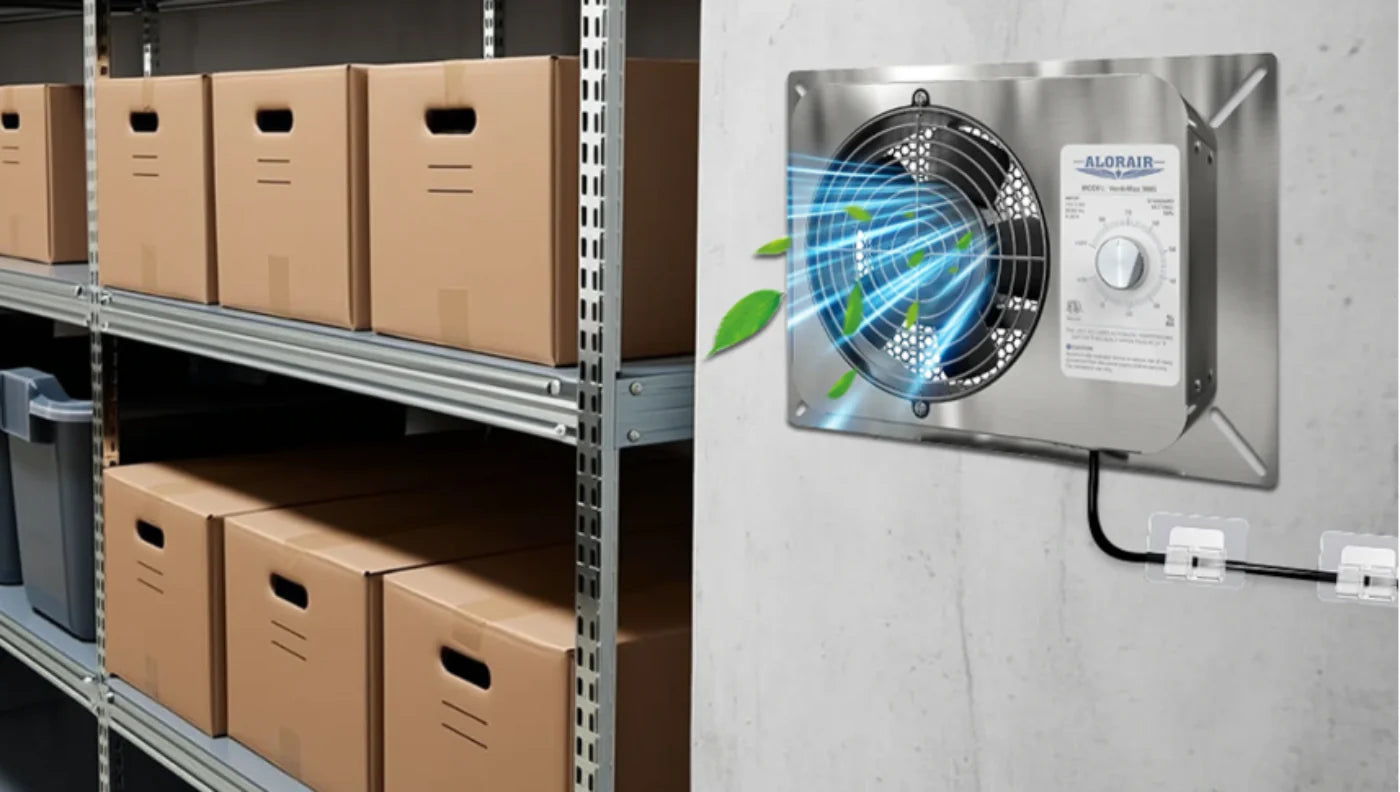Are you wondering what does a dehumidifier do? Is your house damp and musty? High humidity causes odors, mold, and discomfort.
If this is the situation, you definitely do not stand alone, as many people share the same problems. But, knowing how a dehumidifier works can help you fix these problems. So in this article, we are going to explore what a dehumidifier does and how it is able to make your home more comfortable.
So let's get started.
Introduction to Dehumidifiers
Before getting straight to how does a dehumidifier work, it's essential to first understand dehumidifiers.
Basically, a dehumidifier controls and reduces excessive humidity in the air to create a more comfortable and health-enhanced living environment. The extreme humidity brings dampness, which may lead to the development of mold, musty odors, and sometimes damage furniture or electronic equipment.
By removing moisture from the air, dehumidifiers prevent these issues and hence offer a way to make your home a safer, more pleasant place to live in.
But how does a dehumidifier work? Let's discuss this in detail.
How do Dehumidifiers Work?
Here's an easy explanation of how they work:
Air Intake: A dehumidifier draws in the humid air from the room through the use of a fan. The air is drawn in via a grill or vent.
Cooling Coil: The moist air then passes over a set of cooling coils. These are kept at low temperatures by the machine's refrigeration system. As the warm, moist air hits the cold coils, the moisture in the air condenses into droplets of water, akin to how droplets of water form on a cold glass during a hot day.
Water Collection: The condensed water droplets drip down into a collection bucket or are drained out through a hose to a sink or outside.
Reheating: The dehumidified air, cooled by condensation, is passed over a set of warm coils that reheat it to a comfortable temperature before being released again into the room.
Exhaust Air: The now dry, warm air is exhausted back into the room with a lower humidity level.
By cycling such air over and over, a dehumidifier can maintain a healthy and comfortable level of humidity in your home or office.
Benefits of Using a Dehumidifier
Well there are lots of benefits of using a dehumidifier in your home or office, but the most important ones are:
Improved Air Quality: Dehumidifiers reduce moisture, hence making the air less hospitable to allergens like dust mites, mold, and mildew that thrive in humid conditions. This results in cleaner, healthier air.
Allergy relief: Lowering mold, mildew, and dust mites with dehumidifiers will help alleviate allergy symptoms such as sneezing, itching, and respiratory problems.
Inhibits the growth of mold: Low humidity does not allow for the formation of mold and mildew on walls, ceilings, and furniture, which may cause structural damage to property or pose a health risk for the users.
Reduces Musty Odors: If there is too much moisture present, a musty smell can develop in your home. Dehumidifiers help to rid your home of musty odors by reducing the humidity.
Prevents Condensation: Condensation could occur on windows and walls from humid environments and cause damage by water. Dehumidifiers prevent this by maintaining optimal levels of humidity.
Overall, using a dehumidifier contributes to a healthier, more comfortable, and longer-lasting living space.
Types of Dehumidifiers
There are different types of dehumidifiers, each designed to address specific needs and environments.
Here are the main types and their working process:
1. Refrigerant (Compressor) Dehumidifiers
These dehumidifiers extract humid air, and then pass it over a set of cooled coils via a refrigeration cycle. As it cools, condensation occurs, resulting in droplets of water. These droplets are collected in a tank or drained away. The now dry air is slightly reheated and exhausted back into the room.
2. Desiccant Dehumidifiers
Desiccant dehumidifiers use a desiccant material like silica gel to absorb moisture from the air. Air with high humidity is passed through a wheel or rotor stuffed with such a desiccant material. Moisture-laden desiccant is regenerated by heating that releases the moisture for continuous operation.
3. Thermo-Electric (Peltier) Dehumidifiers
These dehumidifiers function based on what is known as the Peltier effect: an electrical current that passes through a device creates heat on one side and cold on the other.
On one side, it is hot; on the other side, it is cold. It means humid air will be passed over the cold side for the condensation of moisture to take place, which will then be collected.
4. Whole-House Dehumidifiers
These whole house dehumidifiers are installed into the HVAC system of the house. They draw air from the entire house, remove moisture, and then distribute dehumidified air back through the ductwork.
5. Portable Dehumidifiers
Portable dehumidifiers that can be placed in various rooms where dehumidification is needed. They draw in air, remove moisture, and expel the dry air back into the room.
Now you must be confused between these types and wondering how to choose the right dehumidifier for your home. Worry not as we are here to help you.
Choosing the Right Dehumidifier
When choosing the right dehumidifier, you'll want to consider several factors to ensure it meets your needs effectively.
Here are some key points to guide you:
1. Capacity:
Dehumidifiers are rated by the amount of moisture they can remove from the air in 24 hours, usually measured in pints. For small rooms or spaces with minimal humidity, a unit with a lower capacity (20-30 pints) might suffice. Larger spaces or those with high humidity like basements might require a crawl space dehumidifier with a higher capacity (50-70 pints or more).
2. Size and Portability:
Consider the size of the dehumidifier in relation to the space where it will be used. Some models like AlorAir 198 PPD Crawl Space Dehumidifier are compact and easy to move, while others are larger and might be more stationary.
3. Energy Efficiency:
Look for models with the Energy Star label. Energy-efficient dehumidifiers will use less electricity, thus helping to lower your energy bills.
4. Features:
Some dehumidifiers also have humidistats for desired levels of humidity, auto shut-off in case of a full water tank, continuous drainage options for unbroken operation, and filters against dust and allergens.
5. Noise Level:
Check the noise level of the dehumidifier, especially if it's going to be placed in your bedroom or any other area one would think one might go for quiet time. Some models are quieter than others.
Considering these factors, you will get a dehumidifier that improves moisture management in your space and can serve your needs accordingly.
Maintenance and Care
Keep your dehumidifier running by following these easy steps:
Clean Regularly
Keep your dehumidifier working well by cleaning the filter; also, empty the water tank daily to help prevent mold and mildew. All you have to do is clean it with water and mild soap once a week.
Clean the Coils
Your dehumidifier coils can collect dirt and reduce efficiency. So, you will have to use a soft brush or vacuum cleaner with a brush attachment to clean coils.
Check the Drain Hose
In case your dehumidifier does feature a drain hose, ensure that it is securely fitted to the unit and isn't kinked. Occasional checking of the hose for blockages and cleaning it with a mild solution of bleach will help to prevent mold growth.
Maintain Humidity Levels
The level of humidity to keep for comfort and efficiency is between the ranges of 30% to 50%. Regularly monitor the humidity with a hygrometer and adjust accordingly.
Check for Leaks
Check for leaks in the dehumidifier regularly. In case of a leak, check inside the water tank, the drain hose, and other parts to detect where the leakage is originating to stop it.
Get Professional Help
Have a professional service your dehumidifier once a year, especially if you use it a lot. A professional can do a thorough inspection, cleaning, and make any necessary repairs.
By following these simple steps, you can keep your dehumidifier working well and enjoy a comfortable, dry home.
Common Issues and Troubleshooting
Here are some common issues you might face while using a dehumidifier in your home and how to fix them:
1) Dehumidifier Not Turning On:
1. Check if it's plugged in properly.
2. Ensure the outlet is working by testing with another device.
3. Inspect the power cord for damage.
4. Verify the settings; the unit might not turn on if the humidity level is already low.
2) Dehumidifier Not Collecting Water:
1. Check the room's humidity level; it might be already low.
2. Clean or replace the air filter.
3. Clean the coils.
4. Ensure proper placement with good airflow.
3) Dehumidifier Leaking Water:
1. Ensure the water tank is correctly positioned and not overfilled.
2. Check the drain hose for secure attachment and blockages.
3. Inspect the tank and hose for cracks or damage.
4) Dehumidifier Making Loud Noises:
1. Tighten any loose parts.
2. Clean or replace the fan if it's noisy.
3. Ensure the dehumidifier is on a level surface.
5) Dehumidifier Freezing Up:
1. Ensure the room temperature is above 65°F (18°C).
2. Clean the coils regularly.
3. Ensure good airflow around the dehumidifier.
Final Words
Knowing what does a dehumidifier do and how it works can greatly improve the comfort and health of your home. Dehumidifiers remove excessive humidity, preventing mold build-up, musty smell, and damage to furniture and electronics.
They further improve air quality, provide allergy relief, and enhance your living environment. Besides, proper maintenance and troubleshooting will keep your dehumidifier running efficiently forever.


